Throughout history, footwear has been a vital aspect of human culture and tradition, with each society adding their own unique elements to the design and function of shoes. One such type of footwear, slippers, are recognized for their diverse roles and significance across different countries and cultures. Spanning from the highly symbolic slippers in Japanese tradition to the use of slippers and footwear in various European folklores, the cultural importance of these seemingly ordinary accessories is both fascinating and insightful, shedding light on the customs and beliefs of these societies.
The Cultural Importance of Slippers in Japan
In Japan, slippers hold a significant cultural importance that goes beyond their basic function of providing comfort to one’s feet. Slippers in Japan are largely connected to the concept of cleanliness and maintaining a clear distinction between the outside world and the inside of a home, or any other building for that matter. Upon entering a Japanese home, it is customary to remove one’s shoes and change into a pair of indoor slippers. This practice stems from a strong desire to keep the home environment clean and free from dirt or contaminants that may be carried in on the bottom of shoes.
This separation of inside and outside is not limited to just the home. For example, one can find a selection of slippers at the entrance of many traditional Japanese inns, restaurants, and even some offices. It is considered polite to the hosts or guests to change into a pair of provided slippers before stepping further into the space. In doing so, visitors are not only keeping the space clean, but also showing their respect for the beliefs and customs of the hosts.
There are various types of slippers used in Japan with different purposes. The most common are uwabaki, which are lightweight slippers typically worn by students in schools and by guests in homes. Toilet slippers, or benjo waraji, are another type of slippers that are used exclusively for entering the bathroom area. These slippers are placed in front of the bathroom entrance, and it is important to remember to change back into regular indoor slippers immediately after leaving the bathroom. This is meant to ensure that germs or bacteria from the bathroom floor do not make their way into the main living areas.
In addition to practical uses, slippers also appear in traditional Japanese arts and performances, such as the tea ceremony and Noh theatre. For instance, during a tea ceremony, it is customary for the host and guests to wear special tea ceremony slippers, known as chabaki, in the tea room. These slippers are usually made of simple materials like straw, but they play a subtle yet essential role in maintaining the purity and sanctity of the space.
Understanding and acknowledging the importance of slippers in different cultures and traditions offer unique insights into the values and practices that shape societies around the world. Seemingly mundane items, such as footwear, can hold deep cultural significance and can teach us about the priorities and etiquette of a particular community. This is evident in the role slippers play in Japanese culture and Middle Eastern and Islamic traditions.

The Cultural Significance of Slippers in Middle Eastern and Islamic Traditions
In Japanese culture, slippers serve as a constant reminder of the link between individual behavior and the well-being of the community. They emphasize values surrounding cleanliness, respect, and mindfulness. Conversely, in Middle Eastern and Islamic traditions, slippers play a significant role in various cultural and religious practices, contributing to etiquette, rituals, and modesty. One such example is the use of specific footwear during prayers or religious ceremonies. In mosques, during the Islamic ritual of Wudu (ablution), worshippers remove their shoes before entering the prayer area, replacing them with slippers or sandals. This practice highlights the importance of cleanliness and purity within Islamic teachings.
In addition to religious purposes, slippers are often intrinsically linked to the traditional garments worn in various Middle Eastern countries. For instance, Ottoman Turkey popularized a type of footwear called “yemeni,” which are slip-on leather shoes with a pointed toe. These slippers are not only functional but also considered elegant and fashionable, with different colors and intricate embroidery adorning them. Similarly, in Morocco, the traditional pointy-toed leather slippers are called “babouches” and are considered a symbolic representation of Moroccan culture and heritage.
Another significant aspect of the cultural role of slippers in Islamic tradition is the symbolic imagery of footwear in art and literature. Within Islamic art, the depiction of slippers often represents humility, subservience, and the ethereal charm of the wearer. Furthermore, classical Islamic poetry frequently employs the imagery of slippers as a metaphor for temporal concerns, transient worldly possessions, or the ultimate submission of individuals to the will of the divine.
The cultural significance of slippers in Middle Eastern and Islamic countries also extends to etiquette and social customs. In many countries, it is customary for guests to remove their shoes and wear slippers when entering someone’s home. This practice is a sign of respect, recognizing both the sanctity of the domestic space and the importance of cleanliness. In fact, gifting slippers to a host as a token of appreciation is considered highly thoughtful and respectful in many Middle Eastern cultures.
In Middle Eastern and Islamic traditions, the cultural significance of slippers can be seen in the realm of personal grooming and self-expression. Both men and women may wear slippers with lavish embellishments, striking colors, and intricate designs to express their sense of style, identity, and social status. For example, in Pakistan and India, brides often wear “khussa,” a type of handcrafted leather slipper adorned with exquisite embroidery or beadwork, during their wedding festivities. The attention to detail and craftsmanship highlights the importance of personal adornment in traditional Middle Eastern and Islamic cultures.
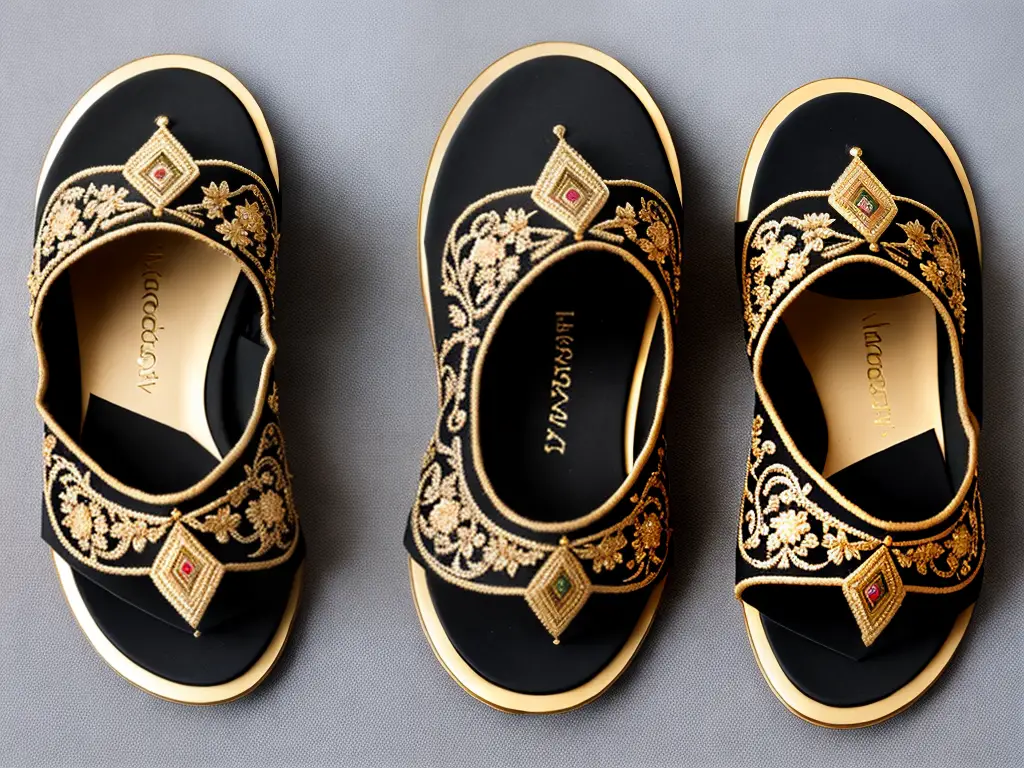
The Cultural Significance of Slippers in European Traditions
In a different context, slippers have also held various symbolic and cultural significance in European traditions and folktales throughout history. One of the most well-known examples is the famous story of Cinderella. The iconic glass slipper in the tale has come to symbolize not only the transformation of Cinderella from poverty and misery to beauty and happiness, but also the idea of a destined and perfect union. The glass slipper also stands for delicacy, refinement, and exclusivity –qualities often associated with royalty, thereby emphasizing Cinderella’s true, inherent nobility. Such tales and traditions showcase the versatility of slippers as culturally significant symbols across different civilizations.
Another example of the cultural significance of slippers in European folktales is their association with the Russian folktale character, Baba Yaga. This fearsome and powerful witch is said to live in a hut that is perched on giant chicken legs, and her mode of transportation is a magical mortar and pestle. In some versions of her story, Baba Yaga can be sympathetic and provide assistance to the protagonist, but only if they complete specific tasks for her. One such task often involves sorting a pile of grains while wearing special slippers, which conveys the importance of wisdom, diligence, and resourcefulness.
In Romania, there is a traditional celebration called “Paparude”, which is held in times of drought to summon rain. During this event, a young girl or boy is chosen as the “Paparuda” and is adorned with leaves and flowers. They then go through the village, performing a ritual dance while the villagers follow and sing traditional songs. During this performance, the “Paparuda” wears a pair of slippers with a sole made of fabric that has been soaked in water. The slippers are believed to have the power to bring rain, symbolizing fertility and the re-birth of life after a dry period in nature.
Across many European cultures, slippers have been seen as important components of marriage and bridal ceremonies. In some Eastern European traditions, the groom must find and retrieve his bride’s slippers, which have been hidden by her family, as a test of his wit and commitment. In other customs, newlyweds will share slippers in a ritual meant to signify their commitment to share everything in their new lives together. In Hungarian tradition, it’s a custom for the bride’s father to give his daughter’s bridegroom a pair of slippers during the wedding ceremony, symbolizing the transfer of responsibility and protection to her new family.
In Portugal, ‘Chinelos’ are traditional, soft slippers made of leather or cloth, often adorned with intricate embroidery. These slippers are typically worn by women during festivals and other celebrations, serving as a representation of femininity, grace, and elegance. Wearing ‘chinelos’ during these events symbolizes the connection between cultural roots and a sense of belonging, ultimately helping to honor the traditions and festivities rooted in Portuguese culture.
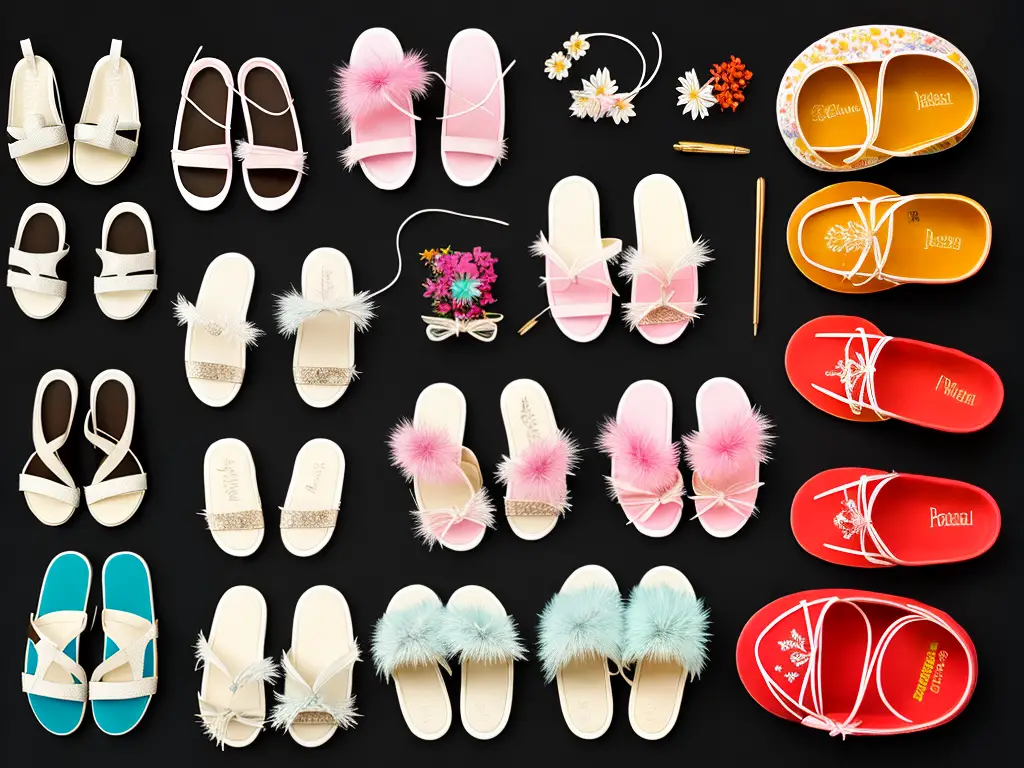
The Story of Ballet Slippers
Similarly, ballet slippers have a rich history and symbolism in the world of performing arts. As an essential part of a ballet dancer’s attire, these soft, lightweight shoes enable dancers to perform intricate and delicate movements with ease and grace. Both ‘chinelos’ and ballet slippers showcase the importance of footwear in different cultures and traditions, highlighting how shoes can carry significant meaning beyond their practical use.
The origins of ballet can be traced back to the Italian Renaissance courts of the 15th and 16th centuries, where court dances were a popular form of entertainment. Ballet soon found its way to the French court under the patronage of Catherine de Medici, who married into the French royal family, bringing the Italian influence with her.
The transition to modern ballet slippers can be credited to Marie Camargo, a renowned French ballerina in the early 18th century. This change in footwear marked a turning point in the art of ballet, as dancers could perform more athletic and challenging choreography.
In modern times, the cultural significance of ballet slippers has transcended the boundaries of the performing arts. Ballet slippers are not only a symbol of elegance and grace but also have become a fashion statement and an icon of classical dance.
Footwear has always held significant cultural importance in various societies, with slippers playing a crucial role in different traditions. In the world of dance, ballet slippers have gained prominence through romanticized stories depicted in classical ballets and the bold, innovative choreography of modern dance. These slippers serve as a reminder of the rich history and traditions that continue to influence the art form today.
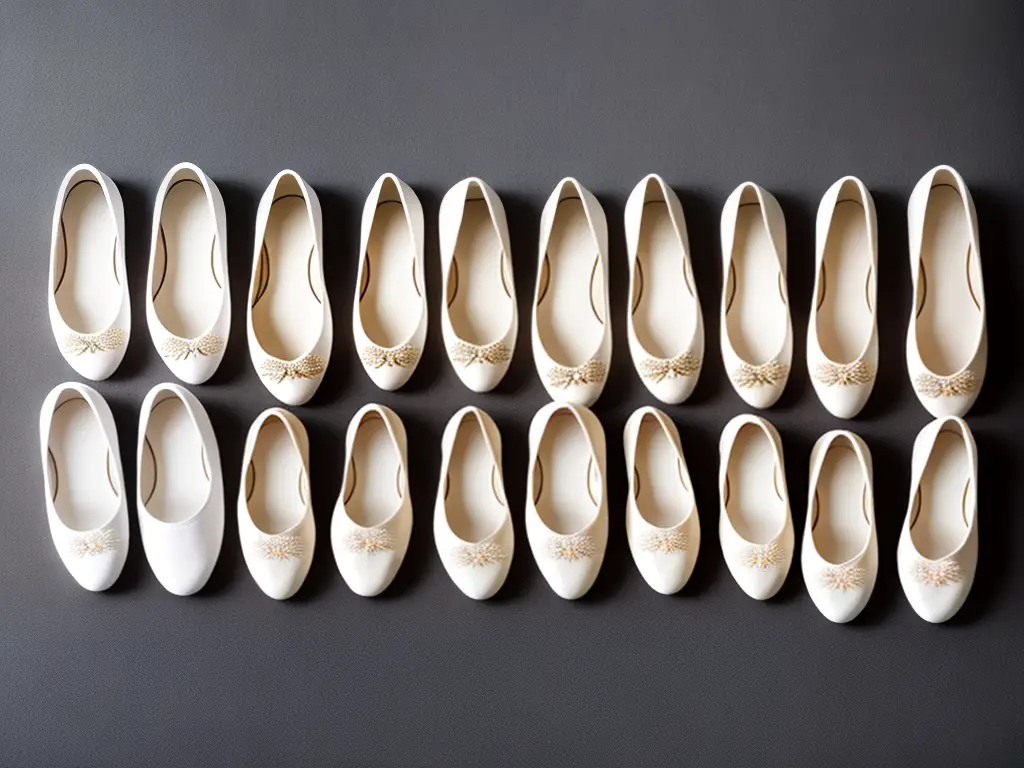
The Significance of Moccasins in Native American Culture
Similarly, in Native American culture, footwear like moccasins and other slipper-like shoes hold significant cultural importance. The style and materials used in these traditional shoes vary depending on the tribe’s geographical location and distinct cultural practices. However, like ballet slippers, moccasins are not just considered practical and comfortable footwear; they also carry deeper symbolism within the Native American tribes.
The materials used in the construction of moccasins illustrate the close relationship between Native Americans and their natural environment. Typically, moccasins were made from the hide of deer or buffalo, which made the shoes durable and suitable for various terrain types. Additionally, these hides were chosen based on their availability in the region, further emphasizing the tribes’ connection with their local environment. The utilization of natural materials also showcased the Native Americans’ resourcefulness and respect for the resources provided by nature.
The design of moccasins and other slipper-like footwear in Native American culture was highly functional, allowing for mobility and adaptation to different environments. Some moccasins were designed to accommodate harsh conditions, such as the Arctic regions, where they were made with fur linings and robust soles. Alternatively, some tribes created soft-soled moccasins for use in warmer climates or indoor environments. These designs not only protected the wearer from potential injuries, but they also enabled quiet movement, which was considered essential during hunting activities.
Moccasins in Native American culture also served as a means to express individuality and artistic expression, as well as tribal identity. Each tribe would have distinctive design elements, such as beading, embroidery, or painting, which set them apart from other tribes. In some tribes, the moccasin patterns could represent a family lineage, spiritual beliefs, or tribal stories. The intricate designs and craftsmanship often signified the wearer’s social standing, marital status, or membership in a particular group with the tribe.
In contemporary times, the recognition of Native American moccasins and other slipper-like footwear has become increasingly important as a means of preserving cultural identity and maintaining a connection to their rich ancestry. Various tribes and Indigenous groups continue to create moccasins using traditional techniques, materials, and designs passed down through countless generations. Moccasins and their cultural significance in Native American culture exemplifies the inseparable connection between the tribes’ members, their history, artistry, and the natural world. Similarly, in various African cultures, slippers and footwear have also always held cultural significance and symbolism, often linked to wealth and prestige.
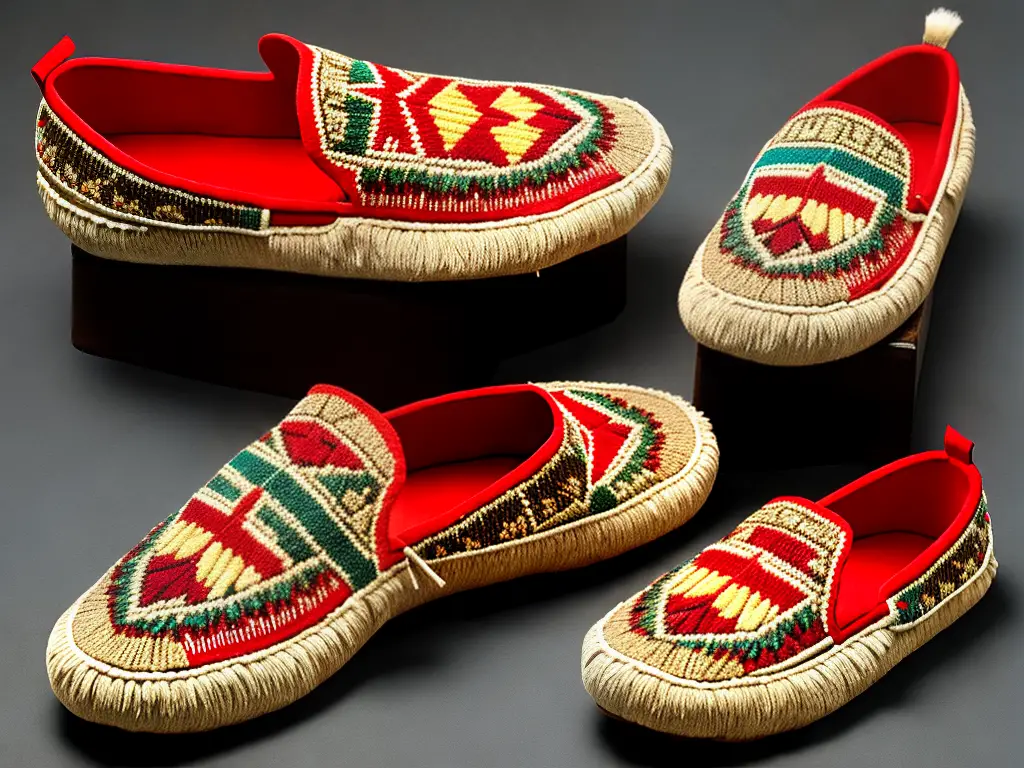
African Footwear and its Cultural Significance
Beaded slippers are common in many tribes and communities across Africa, with variations in the colors and designs that signify the wearer’s status or role in society. For example, the Zulu people in South Africa use colorful beadwork on their slippers, with each color carrying a specific meaning. The elaborate beading patterns on the slippers can provide information about the wearer’s marital status, personal beliefs or even their experiences. Both Native American and African slipper traditions serve as meaningful reflections of indigenous identity and traditions worldwide, showcasing the importance of footwear as a unique cultural symbol.
Maasai sandals, intricately crafted by the Maasai people of East Africa, exemplify the importance of footwear in this culture. These traditional sandals are handcrafted using natural materials such as cowhide and decorated with vibrant beadwork, showcasing the Maasai’s renowned beadworking skills. These sandals symbolize their deep connection to nature, while also being functional and practical for tending to livestock or traversing the African savanna.
Among the Akan people of Ghana and the Ivory Coast, slippers hold a prominent place in traditional ceremonial attire. The Akan are renowned for their vibrant Kente cloth, but their footwear also carries cultural significance. Called ‘ahenema,’ these slippers are made from high-quality leather and feature gold, silver, or brass ornaments that denote the wearer’s status. Ahenema is often worn by chiefs, kings, and other high-ranking individuals as an indicator of wealth, power, and prestige.
In Ethiopia, traditional slippers, known as ‘sway,’ have been worn for centuries. Made from cowhide, sway features unique and colorful decorations that are both esthetically pleasing and culturally significant. The most common colors used on Ethiopian slippers are red, green, and yellow, which represent the Ethiopian flag, symbolizing the pride and unity of the country. Additionally, certain regions of Ethiopia have specific designs and patterns unique to their area, making the slippers a distinctive symbol of local identities.
Moroccan leather slippers, called ‘babouche,’ are known for their vibrant colors and intricate designs. These slippers are handcrafted from soft leather, and their pointy-toed shape is both distinct and visually appealing. In the Moroccan culture, babouche slippers symbolize hospitality and are customarily offered to guests to wear inside the home. Wearing slippers, in general, is considered a sign of respect and cleanliness, as they help to keep the home free from dirt and dust.
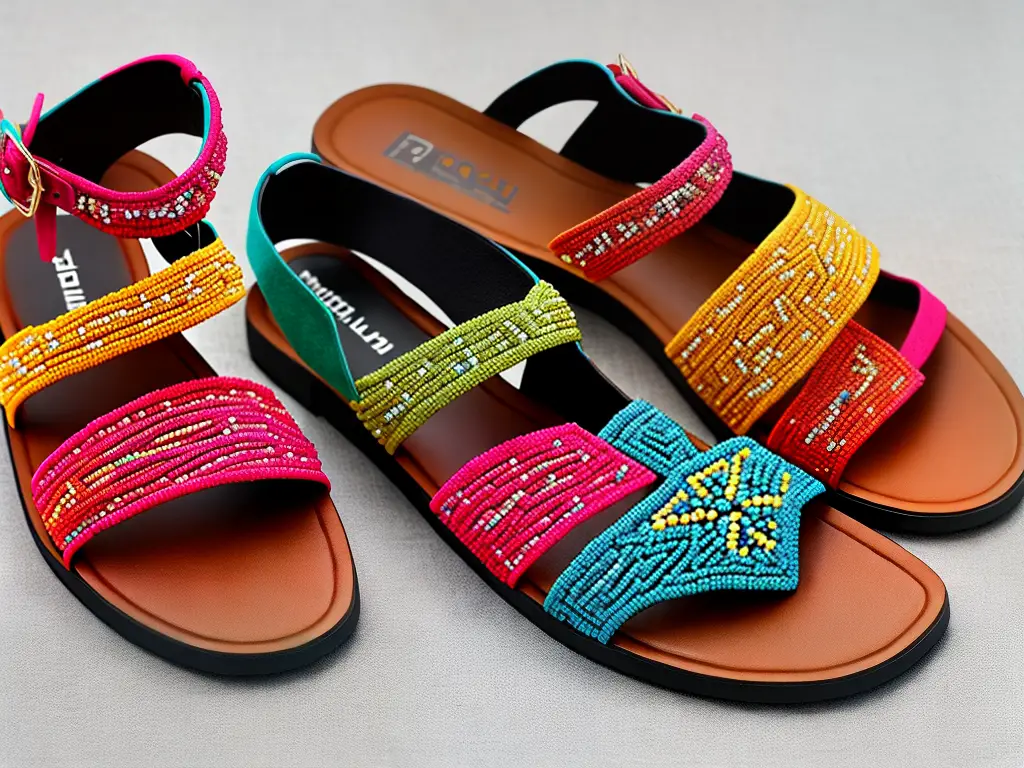
The Cultural Significance of Slippers in China and Southeast Asia
Similarly, in China, the cultural significance of slippers can be traced back to the practice of foot binding and the use of lotus shoes. Lotus shoes were small, intricately embroidered shoes designed specifically for women with bound feet, which emerged during the Song Dynasty (960-1279 AD). The act of foot-binding, which was considered a symbol of beauty and status, involved tightly wrapping young girls’ feet to manipulate their growth, resulting in a highly arched and compressed foot. The name ‘lotus shoe’ derived from the ideal shape of the bound foot, which was thought to resemble a lotus flower. By comparing Moroccan babouche slippers and Chinese lotus shoes, it is evident that slippers hold a significant cultural value in both countries, though they represent different customs and traditions.
Aside from the aesthetic aspect, lotus shoes also carried deep symbolic meaning. The intricate embroidery on the shoes often depicted symbols of femininity, prosperity, and love. The colors used in the embroidery also carried their own significance; red was used to symbolize joy and vitality, while blue represented purity and steadfastness. Moreover, the shape and size of the shoes were seen as a representation of a woman’s social status – smaller and more delicate shoes were indications of higher social standing.
In Southeast Asia, the use of slippers and sandals is closely tied to religious and cultural beliefs. In countries like Thailand, Cambodia, and Myanmar, where Buddhism is predominant, the act of entering temples and religious sites requires the removal of footwear as a sign of respect and humility. This practice also extends to private homes where guests are asked to take off their shoes when entering. As a result, slip-on footwear like slippers and sandals have become a popular choice, as they provide ease of removal and comply with cultural norms.
Traditional slippers used in countries like Indonesia and the Philippines are often handwoven from natural materials such as rattan or pandan leaves, which not only offer durability and comfort but also demonstrate skilled craftsmanship. The use of these materials is a reflection of the close relationship between people and nature within these cultures. In some communities, slippers or sandals may be adorned with intricate patterns or bright colors, showcasing local artistic talents and customs.
In both China and Southeast Asia, slippers have transcended their functional roles and become a significant aspect of cultural identity. While the practice of foot binding in China has been abolished, the legacy of the lotus shoe as a symbol of femininity and social standing remains. In Southeast Asia, slippers and sandals continue to be favored for their practicality, while the various designs and materials used reflect the diversity and creativity of the region’s cultural traditions.
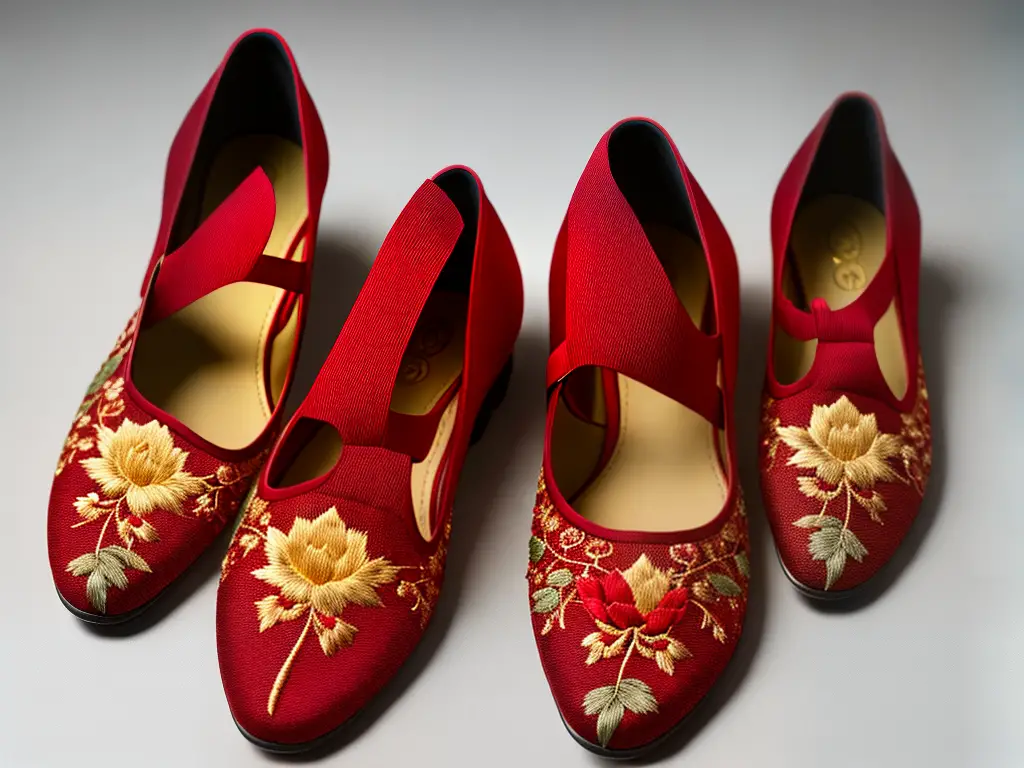
The Influence of Traditional and Cultural Slippers on Modern Fashion
Continuing from the influence of slippers in China and Southeast Asia, it is evident that footwear around the world has been strongly influenced by traditional and cultural elements from various countries and traditions. Slippers, in particular, are an important representation of cultural significance in many societies. Their designs and materials vary considerably from one place to another, which can be observed in modern fashion and design. Contemporary footwear incorporates unique elements, materials, and styles inspired by these traditional and cultural slippers, demonstrating the lasting impact of such traditions on the world of fashion.
One notable example of traditional slippers that have made an impact on modern fashion are the Moroccan babouche slippers, which are typically made from soft leather and feature an elongated, pointed toe. These slippers have inspired numerous designers around the world, like Celine and Christian Louboutin, to create their own interpretations of the babouche, integrating this cultural aesthetic into modern designs. In addition to Moroccan influences, Asian-inspired slippers have also made their mark in the contemporary fashion scene, with the Japanese geta and zori shoes inspiring designers to incorporate wooden platforms and fabric straps into their footwear creations.
Another prime example of cultural influence in modern slippers can be found in the traditional Indian footwear, known as juttis. These ornate, hand-embroidered slippers often feature vibrant colors and intricate patterns, which have been adopted and adapted by designers like Tory Burch and Sophia Webster in crafting their own innovative designs. The traditional jutti has also evolved over time in its home country, with contemporary Indian designers incorporating modern materials like vegan leather and motifs that resonate with younger generations.
Slippers from native cultures around the world, such as the North American indigenous moccasin or the Polish kapcie, have also found their way into modern fashion. These slippers often embody the regional characteristics, materials, and craftsmanship, making them unique and distinguishable. The moccasin, for instance, has become symbolic of American East Coast preppy style, while the kapcie have been transformed into a popular form of house slipper, featuring non-slip soles and even memory foam insoles.
Overall, the integration of cultural and traditional slippers into modern fashion and design reflects the beauty of globalization, as it fosters appreciation for diverse aesthetics, artistry, and craftsmanship. By incorporating elements from various countries and traditions, footwear designers not only celebrate the cultural significance of slippers, but also continue to innovate and push the boundaries of contemporary design. The fusion of past and present, as well as local and global, truly exemplifies the rich and constantly evolving landscape of fashion and design.
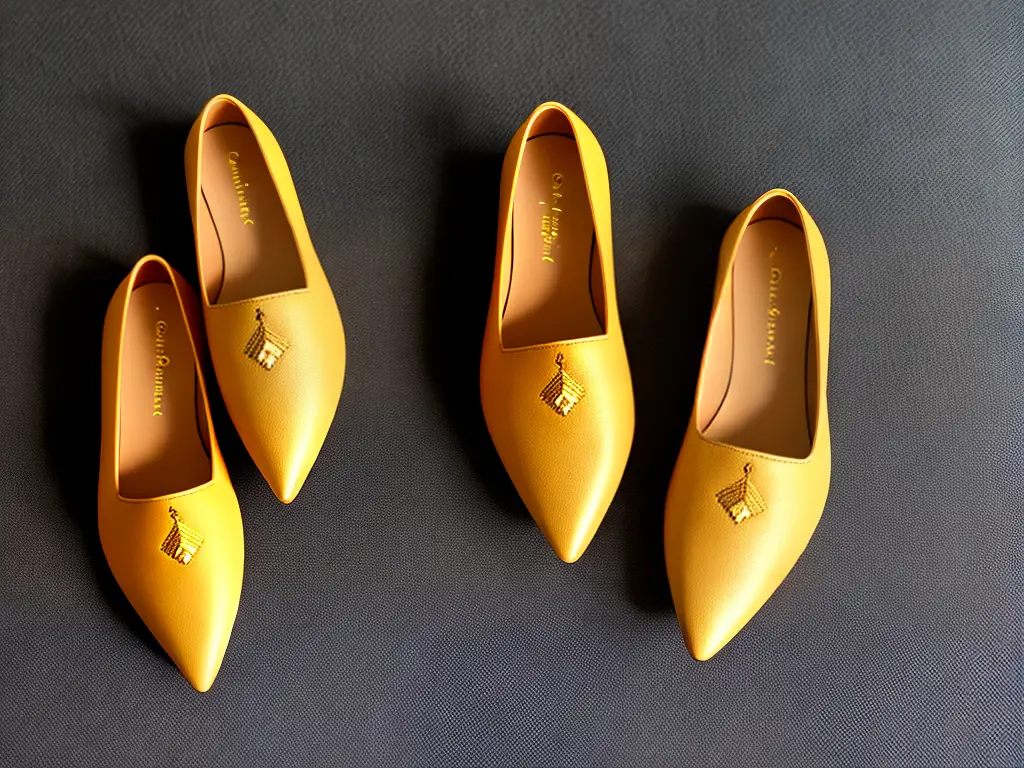
As we have explored the diverse cultural significance of slippers in various societies, we can appreciate their relevance, both historically and in contemporary times. In doing so, it becomes evident that the customs, beliefs, and values of various societies are intricately woven into the fabric of these seemingly simple items of footwear. The legacy of traditional designs, materials, and symbolism remain present as the influence of cultural slippers persists in modern fashion and design, continually inspiring creative expressions around the world.